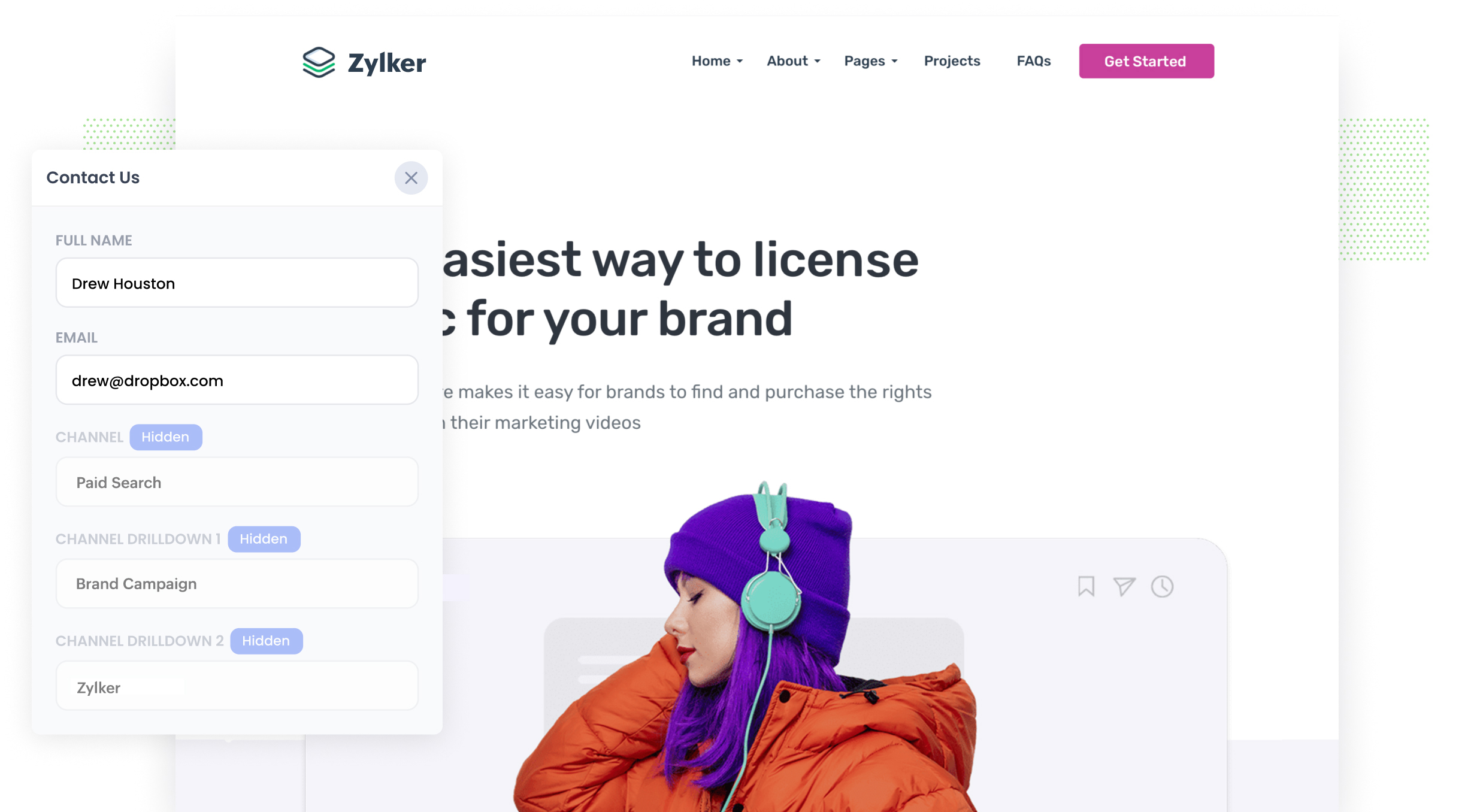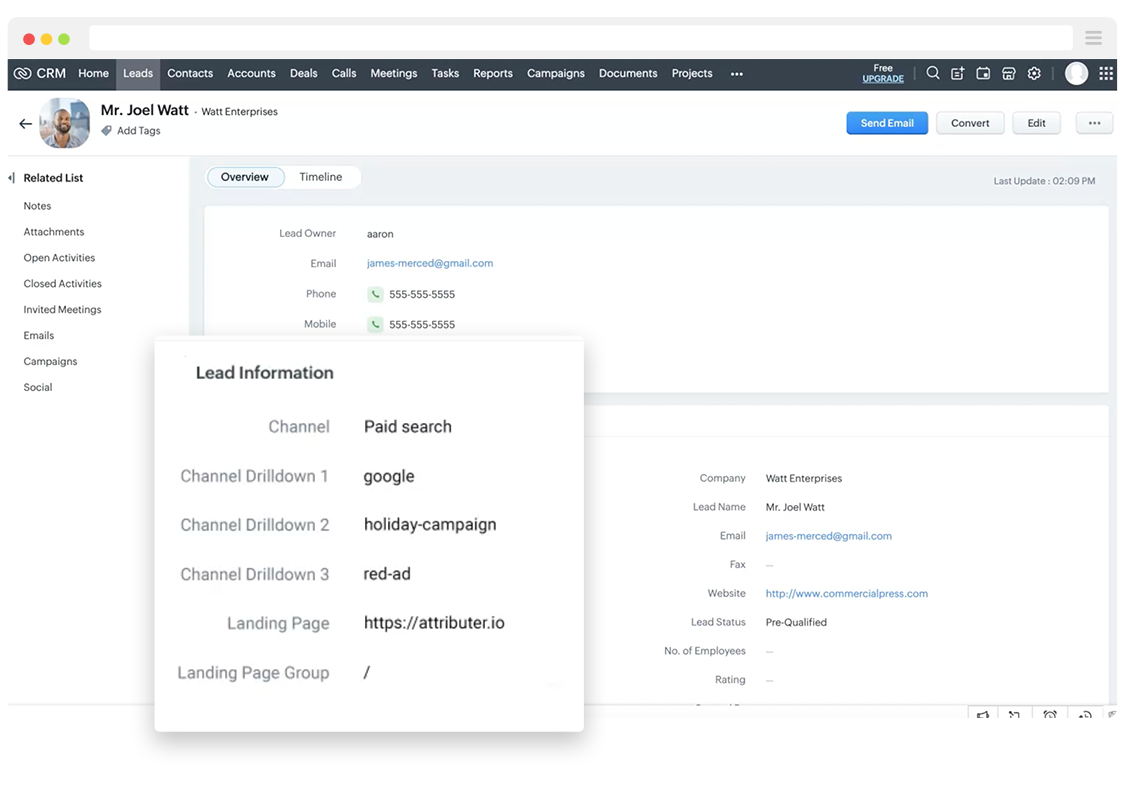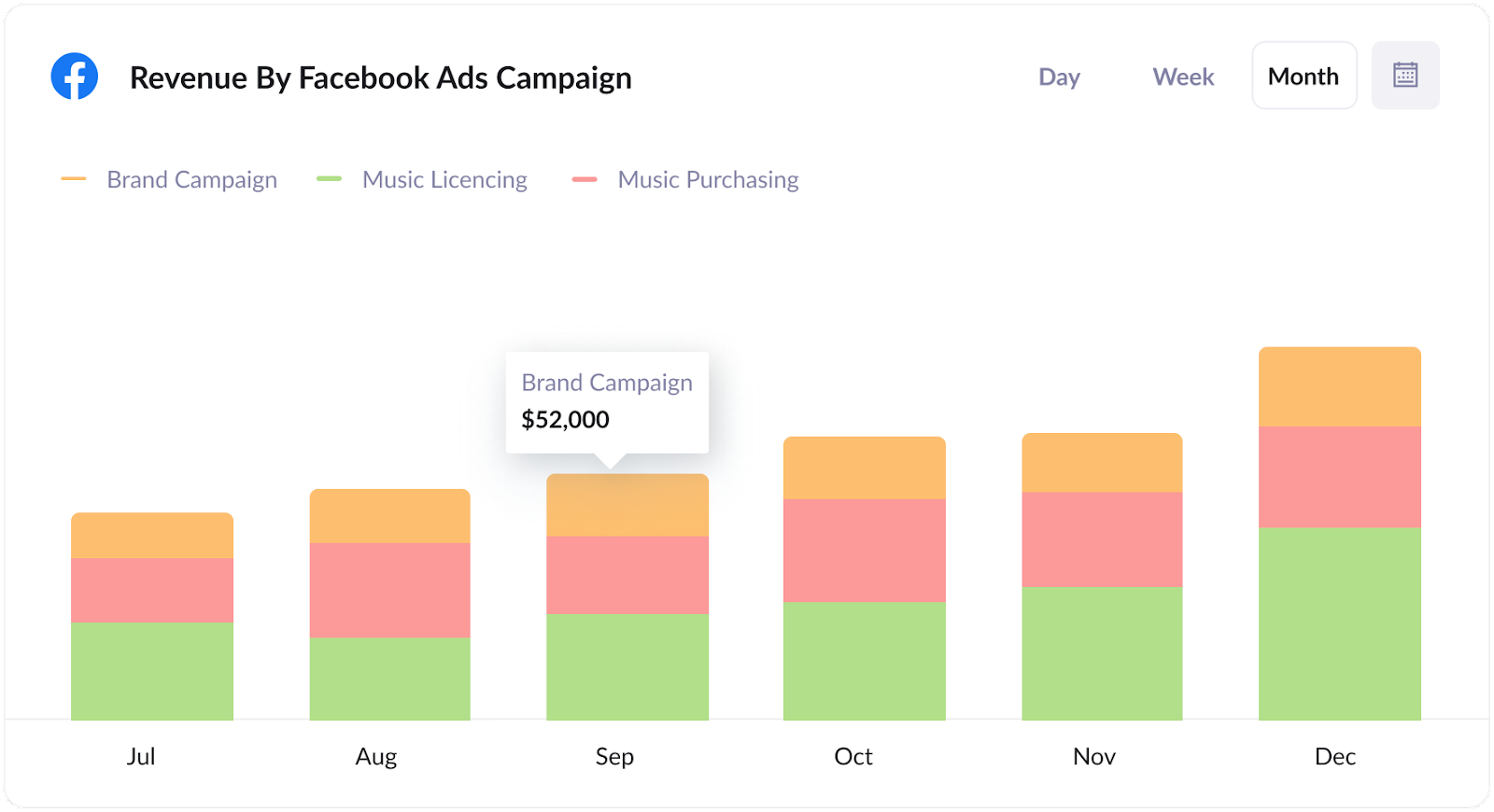How to properly track the source of your leads and customers
- Last Updated : June 12, 2023
- 4.0K Views
- 6 Min Read

Most businesses have website analytics tools embedded in their websites, which enable them to see where visitors are coming from.
That’s a good start, but for most businesses, it’s not enough.
To understand which of your marketing campaigns and channels are actually generating leads and customers, the data you see in your website analytics tool needs to flow into your CRM.
If it doesn't, you could be wasting your precious marketing budget on campaigns that drive lots of website visitors, but don't actually generate leads, customers, or revenue.
Fortunately, there’s a solution. In this post, we’re going to outline a couple of different ways to properly track where your leads and customers are coming from in your CRM, as well as show you some example reports you can run to understand what’s working and what isn’t.
Why it’s important to track the sources of your leads and customers
Let’s imagine you’re the marketer at a company called Zylker, which makes software that helps brands license music for their marketing campaigns. You are running SEO, Google, and Facebook ads to attract new customers to your business.
If you were just using Google Analytics, and only measuring visitors to your website, you’d probably get something like this:
| SEO | Facebook ads | Google ads | |
| Spend | $2500 | $2000 | $2000 |
| Visitors | 50 | 100 | 80 |
If this was all the information you had access to, you would probably conclude that Facebook is the best performing channel (you got more visitors from the same spend), and you’d likely invest more of your budget there.
However, imagine if you could see the number of leads and customers, and the revenue, each of these channels generated for you. You’d have something like this:
| SEO | Facebook ads | Google ads | |
| Spend | $2500 | $2000 | $2000 |
| Visitors | 50 | 100 | 80 |
| Leads | 20 | 10 | 15 |
| Customers | 10 | 1 | 5 |
| Revenue | $25000 | $2000 | $10000 |
Looking at the numbers above, you'd conclude that your SEO efforts were actually performing the best, since:
• You attracted more customers from SEO ads (10) than from Google ads and Facebook ads combined (6)
• You earned more revenue from SEO ads ($25,000) than Google ads and Facebook ads combined ($12,000)
• Your conversion rate from SEO ads is higher (50%) than from your paid ads (10% for Facebook ads and 33% for Google Ads)
As you can see from the example above, when you go beyond measuring visitors, and start to track how many leads and customers you attract through your various marketing efforts, you gain a much better understanding of what’s working and what isn’t. That means you can double down on the initiatives that are really driving growth for your business.
Here are 3 simple steps for tracking the source of your leads and customers in your CRM
1. Add UTM parameters to your ad campaigns
The first step is to add UTM parameters to your various ad campaigns.
If the term UTM parameters is unfamiliar to you, it essentially refers to the extra bits of text you put at the end of the URL you send out during your campaigns.
Let’s say you want to someone to a page called zylker.com. The final URL (with UTM parameters) people access from your ads may look something like this: https://zylker.com?utm_medium=paidsocial&utm_source=facebook&utm_campaign=branding.
You can populate your UTM parameters with whatever information you want to capture, but the general practice includes medium, source, and campaign name.

• UTM Medium = Name of the medium, such as paid search, paid social, or email marketing
• UTM Source = Name of the actual source, such as Facebook, Google, Bing, or Twitter
• UTM Campaign = The name of your campaign
• UTM Term = The name of the set the ad belongs to
• UTM Content = The specific ad
Putting UTM parameters behind your ads is simple and there are free tools that can help you build them.
2. Implement a lead tracking tool
The second step is to implement a tool that tracks a visitor's source and captures that data when they complete a form on your website.
If you are using a form builder like Zoho Forms to power the lead capture forms on your website (such as your Contact Us or Request a Quote form), then you can use the Advanced Tracking feature to do this automatically. To get it set up, you simply need to add a small snippet of code to your website (which you can get from your Zoho Forms account). Once embedded, the code will capture the UTM parameters you placed behind your ads in Step 1 and pass them through to Zoho CRM with each form submission, allowing you to see which campaigns are driving your leads and customers.
If you’re not using Zoho Forms, tools like Attributer can give you similar functionality with virtually any form builder.
Simply add a little snippet of code to your website and add some hidden fields to your forms, and when someone lands on your site, Attributer looks at how they got there, categorises them into a channel (such as Paid Search, Paid Social, or Organic Search), and transfers the data with each form submission.

3. Send the data to your CRM
Once lead source information has been captured by your form tool, you can send the data to your CRM.
The process for this will depend on what tool you are using to power the forms on your website, and your CRM. If you are using Zoho, you can automatically send all the data from Zoho Forms to Zoho CRM using a native integration.
But if you are using a different form builder, then you will likely need to use that tool’s native integration with Zoho CRM to send the data over, or use a dedicated integration tool, like Zapier. Zapier lets you connect any form tool to Zoho CRM and automatically create new leads (with your lead source data) when a visitor submits a form.
3 types of reports you can run to understand where your leads and customers are coming from
Now that you have accurate, detailed marketing attribution data flowing, you can create detailed reports in your CRM. Here are a few examples created using Zoho CRM’s built-in reporting functionality.
You can sync your data using a dedicated reporting tool, like Zoho Analytics, to create even more advanced reports.
1. Leads by channel
Zoho Forms' Advanced Tracking feature, as well as third-party tools like Attributer, capture the source of all leads—not just those from paid ad campaigns with UTM parameters
This means you can build reports that display the number of leads grouped by the channel they arrived from. Such a report can give you a clear overview of how each of your channels is performing, so you can make decisions about where to invest your resources. For instance, Table 2 above shows that the majority of leads are generated by organic search, and that this number is growing month over month, so it may be worth ramping up your investment in that area.

2. Customers by Google Ads campaign
The report below displays the number of customers acquired every month through Google Ads, broken down by the campaign they came from.
This type of report can give you useful insights into which campaigns are actually generating customers for your business and which ones aren’t, and can help you decide how best to allocate your budget.
For example, according to the bar graph in this report, the music purchasing campaign is actually generating the most customers, and has been on a nice upward trend for the last 3 months. So it may be worth shifting some of your budget to that particular campaign.

3. Revenue by Facebook ads campaign
The report below shows the amount of revenue generated from your Facebook ads each month, broken down by the campaign they came from. This type of report can help you truly measure the ROI of your Facebook ads. For instance, the business has generated $185,000 in new revenue from Facebook ads ($52,000 from the Brand Campaign, and the rest from the Music Licencing and Music Purchasing campaigns). If the cost of buying ads and producing creatives is less than $185,000, then the company's getting a positive ROI, and it’s worth continuing to invest.

Wrapping up
If you’re not tracking the source of all your leads in your CRM and are making decisions based on which campaigns are generating the most website visitors, then you might be wasting money on campaigns and channels that aren’t bringing in customers and revenue.
If you want to truly understand which marketing initiatives are driving growth for your business, you can use tools like Zoho Forms to capture information on your lead sources and send that data to Zoho CRM. You can then combine it with the opportunity and revenue information your sales reps provide to run reports (like those above) that show exactly which campaigns and channels create revenue for your business.


